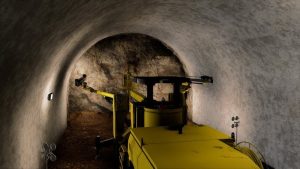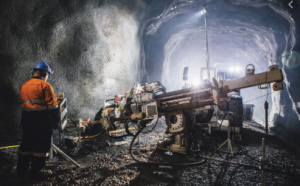Beneath Earth: Mastering Underground Drilling
The Importance of Underground Drilling
Underground drilling plays a pivotal role in various industries, from mining to construction and geothermal energy extraction. It involves the process of creating boreholes or shafts beneath the Earth’s surface to access valuable resources, including minerals, oil, gas, and water. The significance of underground drilling lies in its ability to unlock inaccessible reserves and facilitate the development of crucial infrastructure.
The Evolution of Underground Drilling Techniques
Over the years, underground drilling techniques have undergone significant advancements, driven by technological innovation and industry demands. Traditional methods, such as manual drilling using rudimentary tools, have given way to sophisticated machinery and automated systems. Modern drilling rigs equipped with advanced sensors, robotics, and computerized controls enable more precise and efficient operations.
The Role of Geophysical Surveys
Before commencing underground drilling operations, conducting geophysical surveys is imperative. These surveys utilize various techniques, including seismic imaging, electromagnetic surveys, and gravity measurements, to analyze subsurface geology and identify potential drilling sites. By leveraging geophysical data, engineers can determine the optimal locations for boreholes, minimizing risks and maximizing resource extraction efficiency.

Challenges and Solutions in Underground Drilling
Geological Complexity
One of the primary challenges in underground drilling is the geological complexity of subsurface formations. Geological structures such as faults, fractures, and rock layers can pose obstacles to drilling operations, leading to increased costs and delays. Employing advanced geological modeling techniques and real-time monitoring systems can help mitigate these challenges by providing insights into subsurface conditions and guiding drilling activities.
Environmental Concerns
Environmental considerations are paramount in underground drilling projects, particularly in sensitive ecosystems or urban areas. Contamination of groundwater, habitat disruption, and land subsidence are among the potential environmental impacts associated with drilling activities. Implementing stringent environmental regulations, adopting eco-friendly drilling practices, and utilizing advanced remediation technologies are essential for minimizing the ecological footprint of underground drilling operations.
Safety Risks
Ensuring the safety of personnel and equipment is paramount in underground drilling operations, given the inherent risks involved. Hazards such as cave-ins, equipment malfunctions, and exposure to harmful gases pose significant threats to worker well-being. Comprehensive safety protocols, rigorous training programs, and the deployment of state-of-the-art safety equipment are essential measures for mitigating risks and maintaining a secure work environment.
Future Trends in Underground Drilling
Automation and Robotics
The future of underground drilling lies in automation and robotics, enabling unmanned or remotely operated drilling systems. Autonomous drilling rigs equipped with AI algorithms and machine learning capabilities can enhance efficiency, accuracy, and safety in drilling operations. By reducing the reliance on human intervention, automated systems can optimize productivity and minimize downtime, ultimately driving cost savings and operational excellence.
Green Drilling Technologies
With growing emphasis on sustainability and environmental stewardship, the adoption of green drilling technologies is set to rise. Innovations such as electric drilling rigs, hybrid power systems, and biodegradable drilling fluids are revolutionizing the industry’s ecological footprint. By transitioning to cleaner and more sustainable drilling practices, companies can align with regulatory requirements and demonstrate their commitment to environmental responsibility.

Deep Geothermal Drilling
Deep geothermal drilling holds immense potential for renewable energy generation by tapping into the Earth’s heat reservoirs. Advances in drilling technologies, such as directional drilling and high-temperature drilling tools, are enabling access to deeper geothermal reservoirs previously considered inaccessible. By harnessing the vast geothermal energy resources beneath the Earth’s surface, countries can reduce reliance on fossil fuels and accelerate the transition to a low-carbon future. https://drillitco.com.au/drill-it-group-australia/
Conclusion
Underground drilling continues to be a cornerstone of resource extraction and infrastructure development worldwide. Through technological innovation, environmental stewardship, and strategic planning, the industry is poised to overcome challenges and unlock new opportunities in the depths beneath the Earth’s surface. By mastering the art of underground drilling, we can harness the Earth’s resources responsibly and sustainably, shaping a brighter future for generations to come.

